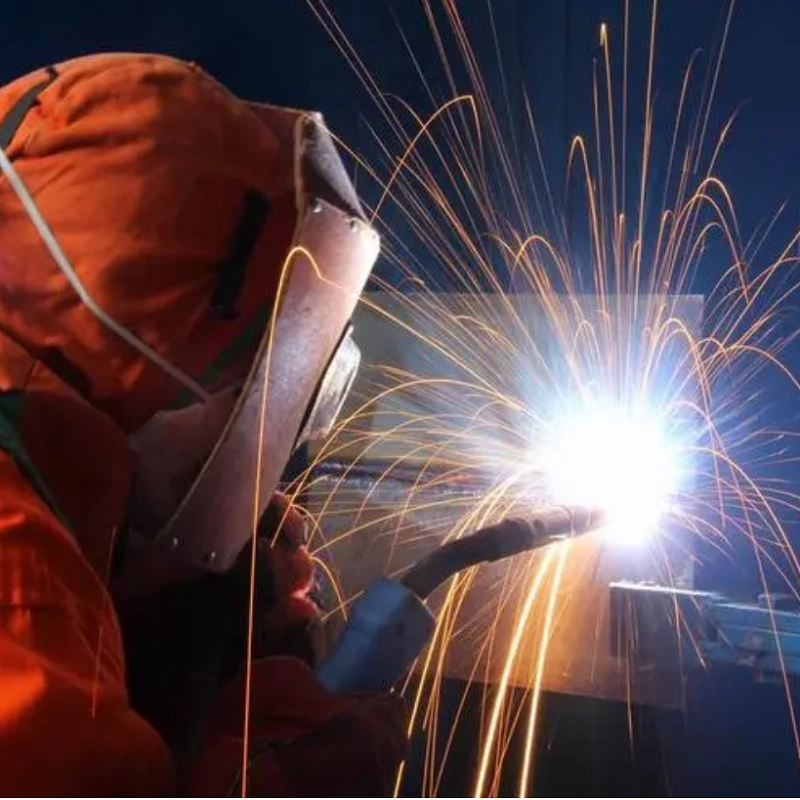Frequently Asked Questions Around Welding: A Guide to Choosing the Right Welding Helmet
Welcome to our comprehensive guide on one of the most essential pieces of personal protective equipment in the welding community: the welding helmet. Whether you're a seasoned professional, a hobbyist embarking on your first welding project, or a procurement manager like Mark Thompson sourcing safety equipment, you've likely had questions. This article is designed to be your go-to resource for frequently asked questions about selecting the right welding helmet, covering everything from auto-darkening technology to critical respiratory protection from welding fume. Let's dive in and weld with confidence!
What Is the Most Important Thing to Look for When Buying a Welding Helmet?
When you start the process of buying a welding helmet, the single most important factor is protection. A welding arc is incredibly bright and emits intense ultraviolet (UV) and infrared (IR) radiation. Without proper protection, this energy can cause severe and irreversible damage to your eyes and skin. The primary job of a welding helmet is to shield your eyes and face from these harmful uv rays. A quality welding helmet provides a complete barrier, ensuring your skin and eyes are safe while you weld.
Beyond radiation, a welding helmet also guards against sparks, spatter, and debris generated during the weld. It is a crucial piece of PPE that no welder should ever be without. Therefore, when you look for in a welding helmet, always prioritize its safety ratings and ensure it provides sufficient protection against welding rays. Everything else—comfort, features, aesthetics—comes second to the helmet's ability to keep you safe while you weld. Any welder knows a good weld starts with good safety. The ability to weld safely is paramount.

Should I Choose a Fixed Shade or an Auto-Darkening Welding Helmet?
This is a classic question for any welder. A fixed shade welding helmet uses a dark-tinted piece of glass, typically a shade #10, that does not change. To start a weld, a welder must position their tool with the welding hood up, then "nod" it down just before striking the arc. This fixed shade lens is simple, reliable, and often more affordable, making it a viable option for those who do a lot of continuous, long-bead welding. A standard welding helmet often comes with a fixed shade.
However, an auto-darkening welding helmet offers significant advantages in convenience and precision. These helmets have a lens that stays in a light state (like shade #3 or #4) until you start to weld. The moment a sensor detects the arc, the lens darkens instantly. This means you can keep the helmet down while setting up your weld, leading to more accurate starts and better overall quality. For any welder who frequently starts and stops, such as when tacking pieces together, an auto-darkening helmet is a game-changer that improves the entire welding experience. This kind of welding helmet makes it easier to weld.
How Exactly Does an Auto-Darkening Weld Helmet Work?
The technology behind auto-darkening welding masks is fascinating. The lens contains a special liquid crystal display (LCD) filter, similar to what you’d find in a digital watch or TV screen. This is the core of the auto-darkening welding system. On the shell of the welding helmet, there are small arc sensors, usually two or four, that are designed to detect the bright flash of the welding arc. The sensor is the key.
When you start to weld, these sensors instantly detect the light and send a signal to the LCD filter. This signal causes the liquid crystals to align in a way that blocks most of the light, darkening the lens to the pre-selected shade in a fraction of a second (often 1/25,000th of a second or faster). This incredible speed ensures you are protected from the moment the weld begins. The optical filter provides constant UV and IR protection, even in its light state, so your eyes are always safe. Any welder appreciates this technology, which helps them weld better.
Does the Viewing Area Size on a Welding Helmet Really Matter?
Yes, the size of the viewing area absolutely matters! It directly impacts your field of vision while you weld. A small viewing area can feel restrictive, like you're looking through a tunnel. This can force a welder to move their head more frequently to get a complete view of the weld pool and surrounding area, which can lead to neck strain and fatigue during a long weld session.
A welding helmet with a large viewing area provides a much wider perspective. This enhanced visibility makes it easier to see your entire workpiece, maintain your travel angle and speed, and monitor the weld for any inconsistencies. With various viewing area sizes available, many welders find that a bigger screen helps improve the quality of their weld and makes the process more comfortable and intuitive. Modern helmets are now available in many viewing area sizes, and it's easier to spot problems with a larger view of the weld pool. A good welder can weld more effectively with a better view.

How Do I Choose the Right Shade Level for My Type of Welding?
Choosing the correct shade level is critical for both safety and visibility when you weld. The right shade depends primarily on two factors: the welding process you're using and the amperage setting on your machine. The higher the amperage, the brighter the arc, and the darker the shade you'll need to protect your eyes. This is a fundamental part of learning to weld.
Different welding and cutting processes require different shades. For example, low-amperage TIG welding might only require a shade #8 or #9, while high-current stick or flux-core arc welding could demand a shade #13 or #14. The best practice is to consult a shade chart, which correlates the type of welding process and amperage to the recommended shade. Many modern auto-darkening filters offer a range of shades, allowing a welder to dial in the perfect darkness for a clear, comfortable view to weld with. The intensity of the arc dictates the shade you will need.
Why Is the Headgear on a Welding Hood So Important for a Welder?
Comfort is not a luxury; it's a key component of safety and productivity for any welder. An uncomfortable welding helmet with poor headgear can be a major distraction, leading to neck pain, headaches, and fatigue. This is why the headgear—the adjustable harness that sits on your head—is one of the most important helmet features to consider when you choose a welding helmet. A welder will be wearing this for hours.
Good headgear is highly adjustable and customizable to your head shape and size. It should allow you to adjust the tension, the distance of the helmet from your face, and the angle at which it sits. Quality systems are designed to balance the weight of the welding helmet evenly, reducing strain on your neck. A proper fit ensures a snug yet comfortable fit, allowing a welder to focus entirely on the weld. If the helmet fits well, the welder can work longer and more safely. The goal is to forget you're even wearing a welding hood.
What Is a PAPR System, and Do I Need One for Fume and Respiratory Protection?
Welding produces a complex mixture of gases and fine particles known as fume. Inhaling this fume can lead to serious short-term and long-term health problems. While good ventilation and fume extraction systems in the welding area are the first line of defense, sometimes additional respiratory protection is necessary. This is where a PAPR system comes in, which is especially important for the professional welder. Your health and safety should be a priority when you weld.
A PAPR, or Powered Air-Purifying Respirator, is a system that integrates breathing protection directly into a welding helmet. It uses a battery-powered blower, worn at the waist, to pull air through a filter and deliver a constant stream of clean, breathable air into the helmet. This creates positive pressure, which helps keep welding fume out. For anyone welding in confined spaces, on materials like stainless steel or galvanized metal, or for long durations, a PAPR system from a brand like Optrel provides crucial protection against fume exposure. This is a critical piece of safety equipment in a hazardous welding environment. A welder who is concerned about fume should consider a brand like Optrel.

Are More Sensors on an Auto-Darkening Helmet Always Better When I Weld?
The number of arc sensors is one of the key factors to consider when purchasing an auto-darkening welding helmet. Most helmets come with either two or four sensors. While a two-sensor helmet is often sufficient for basic, straightforward welding, having four sensors provides more reliable and consistent performance, especially for a professional welder. This is because more sensors offer better coverage.
Imagine you are welding in an awkward position where your hand or a piece of equipment partially blocks one of the sensors. With only two sensors, this could prevent the lens from darkening. A four-sensor helmet is much less likely to have this problem, ensuring the lens triggers reliably every time you start to weld. This is particularly important for low-amperage TIG welding, where the arc is less intense and can be harder for a sensor to detect. More sensors give a welder greater peace of mind that their helmet will function correctly, no matter the angle of the weld.
How Do I Properly Maintain My Welding Helmet?
Proper maintenance is key to ensuring your welding helmet provides adequate protection and a clear view for years to come. It’s a simple process that every welder should make part of their routine. The most important components to maintain are the lenses. The outer cover lens protects the expensive auto-darkening filter from sparks and spatter. It will inevitably get scratched and pitted over time. You should replace it as soon as your vision of the weld is impaired.
The inner cover lens protects the behind the lens filter from dust and sweat. It should also be kept clean and replaced when necessary. Regularly wipe down the helmet shell and the headgear with a mild soap and water solution to keep it clean and hygienic. Store your welding helmet in a safe place where it won't get scratched or crushed. Taking care of your equipment is a sign of a professional welder, and it ensures the helmet is ready for the next weld. It's important to weld with clean equipment.

What Certifications Should I Look for When Selecting a Welding Helmet?
When selecting a welding helmet, you must ensure it meets industry safety standards. These certifications are your guarantee that the helmet has been tested and proven to provide reliable protection. In the United States, the key standard is ANSI Z87.1. A helmet marked with this standard has passed rigorous tests for impact resistance and provides the necessary protection from radiation to protect your face and eyes. A welder should never weld without certified gear.
For products sold in Europe, the CE marking is essential, along with standards like EN 379 for the auto-darkening filter. These standards ensure the welding helmet performs correctly in terms of optical clarity, shade consistency, and switching speed. As a manufacturer specializing in protective equipment, we ensure our helmets are built to meet these critical standards. When you are selecting the right welding helmet, never compromise. Always check for certification marks on the helmet or in its documentation to ensure your welding safety. This provides safety and comfort for the welder. It’s the smart way to weld.
Key Takeaways for Selecting Your Welding Helmet:
- Protection is Paramount: The most important job of any welding helmet is to protect your eyes and face from harmful radiation and spatter when you weld.
- Auto-Darkening for Efficiency: For most applications, an auto-darkening helmet offers superior convenience and accuracy over a traditional fixed shade helmet.
- Match the Shade to the Weld: Always use a shade chart to select the correct shade level based on your welding process and amperage to ensure both safety and a clear view.
- Don't Underestimate Comfort: A lightweight helmet with well-designed, adjustable headgear will reduce fatigue and allow a welder to focus on producing a quality weld.
- Consider Respiratory Safety: For frequent or professional welding, especially in enclosed areas, consider a helmet with an integrated PAPR system to protect against dangerous welding fume.
- Verify Certifications: Always choose a welding helmet that is certified to meet recognized safety standards like ANSI Z87.1 to guarantee it offers adequate protection.






